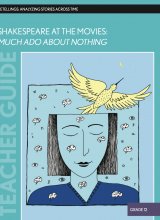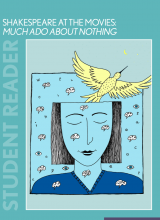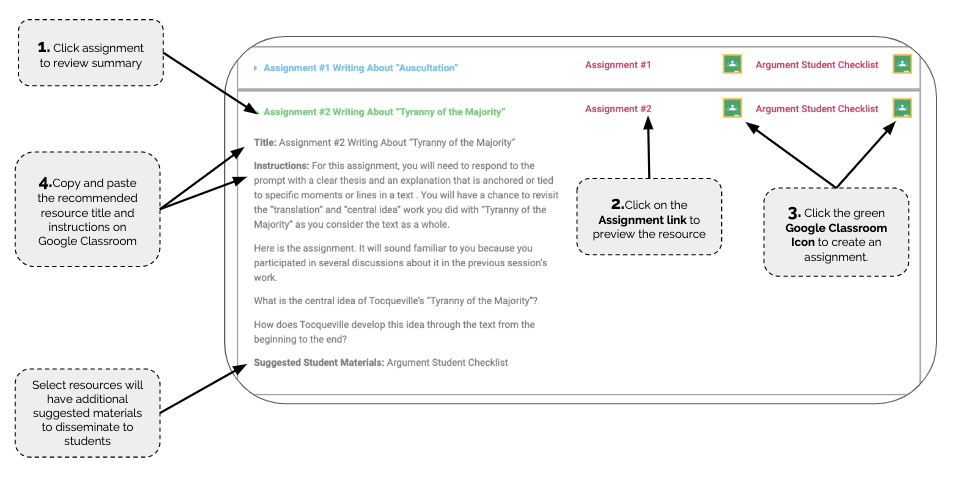Shakespeare at the Movies:
Much Ado About
Nothing - Grade 12
Nothing - Grade 12
In this study, students will work closely with William Shakespeare’s comedy
Much Ado About Nothing. There are two primary goals in this unit: First, to provide students with a close encounter, marked by complete cycles of comprehension and interpretive work, with one of Shakespeare’s most beloved comedies. At the end of the unit, students will know the play, and they will have thought carefully about some of its major issues and themes. Second, they will have an opportunity to think about what happens when a “source text” like Shakespeare’s play is interpreted by, in this case, two filmmakers. To this end, the class’s encounter with the play will begin with the viewing of Joss Whedon’s 2013 sleek and modern adaptation, a film he shot in his own home after he was done shooting his blockbuster superhero movie The Avengers. Whedon’s film will scaffold students’ initial orientation to the play
and prepare the way for the work in the later portions of the study where Whedon’s interpretation is compared with Kenneth Branagh’s 1993 film version of the play.
By the end of the study, students will have had an encounter with one of Shakespeare’s most famous comedies, and they will have engaged in a careful side-by-side consideration of two film adaptations of the original script. They will also have evolved and applied a sophisticated and thorough vocabulary for understanding the choices a director makes when he or she stages or films a retelling of an “open text.”


Table of Contents
Writing Tasks
Title: Tracking Whedon’s Much Ado About Nothing
Teacher Manual Instructions:
Session 1-5
Remind students that during this first cycle of watching and tracking the play, they don’t need to worry about referencing scene or page numbers. It will be enough for them to organize the tracking information according to the five acts (one act per tracking sheet). They can add information on scenes, lines, and page numbers later, as they read the text of the play.
Title: The First Interpretive Assignment: Writing About Whedon’s Much Ado About Nothing
Teacher Manual Instructions:
Session 7
Suggested Student Materials: Interpretive_Argument Checklist
Title: Tracking Branagh’s Much Ado About Nothing
Teacher Manual Instructions:
Session 12 – 16
As with the Whedon viewing, after watching Branagh’s entire film, each student should have five completed tracking sheets—one for each of the five acts in the play. Note that these forms are different than the tracking forms for Whedon and feature only two columns: one for summarizing key moments or events related to the theme of love and one for making notes or jotting questions about similarities and differences between the two films. Once again, students should have time after each viewing (or each act) to fine-tune or amplify the information they add to a tracking sheet.
Point out that this tracking sheet is slightly different than the one they used
to track Whedon’s film. On this tracking sheet, the “Key Moments or Events” column is used to track, specifically, “moments and events related to the theme of love.” The second column of the tracking sheet is intended for students to make notes or raise questions about the similarities or differences between the two films as they relate to the specific moments in the first column.
Title: The Final Interpretive Assignment Comparing Whedon and Branagh
Teacher Manual Instructions:
Session 12 – 16
Suggested Student Materials: Interpretive_Argument Checklist
Charts for Discussion
Checks for Understanding
Title: Act 1, Scene 1: Whedon vs. Branagh
Teacher Manual Instructions:
Session 10
Reconvene the whole class. Facilitate a brief discussion about the different choices each director made in their film versions of the scene. Capture this comparison on a two-column chart titled something like “Act 1, Scene 1: Whedon vs. Branagh.” Use the left column for Whedon’s choices and the right for Branagh’s. The intention here is to help clarify and firm up the class’s sense of how Whedon’s and Branagh’s scenes are similar and different.
Title: Whedon’s Choices: Effects
Teacher Manual Instructions:
Session 11
In addition to facilitating this conversation, work hard to capture and distill the major claims students seem to be making. Capture these claims on two charts, one for each film. Title these charts something like “Whedon’s Choices: Effects” and “Branagh’s Choices: Effects.” Push students to generate film- and script-based evidence to illustrate and support each entry.
Title: Branagh’s Choices: Effects
Teacher Manual Instructions:
Session 11
Title: Choices: Whedon vs. Branagh
Teacher Manual Instructions:
Session 17
Independent Reading
Title: Book Interview
Instructions:
Display a copy of the “Book Interview” sheet for the class to see and distribute copies to students.
Using one of the books from the classroom library, model for students how to interview a book and how to fill out the sheet. Answer any questions students have about the form and its terminology.
Give students time to interview three books and to enter their findings on the “Book Interview” sheet.
Title: Book Pass
Instructions:
Organize students’ desks into a circle (or, if this is not possible, determine a very clear path for books to pass through the group).
Explain the purpose of a book pass:
A book pass is another way to expose students to the texts available in the classroom library. A book pass requires students to use their book interviewing skills. A book pass is a chance for students to find titles to add to their “Books I’d Like to Read” list.
Display a copy of the “Book Pass” for the class to see and pass out copies to students.
Demonstrate for the class how a person goes about making an entry on the form. Since students will need to write quickly, show how an author can be listed just by last name and first initial, and demonstrate how a student can abbreviate a long title if necessary. What matters is that they have enough information to track down the book again later if they need to.
Give each student one book (or magazine). Tell them it doesn’t matter which text they start with, because they will see all—or at least many of—the books. (Be sure you have one title for each student in the circle.)
Choose a direction for passing.
After students receive a book, they should immediately record the author’s name (if the text is a book) and title on the “Book Pass” form.
Give students one minute to interview each book following the procedure established in the previous session.
At the end of one minute, call “pass.” At this time, students should make an entry in the comments column and pass the book to the next student.
Continue the book pass until each student has interviewed all the books.
Title: Book Recommendation
Instructions:
Distribute copies of the “Book Recommendation” form to students and give them time to craft or begin crafting their first review. Students can choose to write about a book they’ve completed recently or one they remember well from past reading.
Title: Goals for My Reading Life
Instructions:
Display a copy of “Goals for My Reading Life” for the class to see and distribute copies to students.
Use this time to review how to fill out the goals sheet. Be sure to show students how they can use the charts to generate ideas for answers to the “Goals” questions.
Take a moment to stress the value and function of the “Books I’d Like to Read” list. Point out that this list is a tool that serves the same function as a bedside table for some readers: It is a place to store up titles or books that are “next in line.” Remind the class that readers constantly have their eyes open for “next” texts. A “Books I’d Like to Read List” is a way to prevent aimless and unproductive castings around for new reading materials. It’s a planning tool.
Explain that at the beginning of each marking period, each student will fill out a new goals sheet; at at the end of each marking period, students will take a few minutes to review their goals statements and reflect on their efforts to meet them.
Answer any questions students have about the “Goals for My Reading Life” forms.
Give students time to complete the form and set a deadline for submission. You may decide to photocopy these to keep a set for yourself. Return the forms to students during the next session and have them attach the form to a page in their notebook or save it for their student portfolio (see Creating a Student Portfolio).
Title: Reading Log
Teacher Manual Instructions:
Show students how to set up a “Reading Log” in their notebook. They should be sure to enter it in their table of contents. You may decide to distribute sticky notes so that students can flag this page. Use the model on the next page to guide your efforts.
Notice the column titled “Date Completed/# of Pages Read.” This column is a place for students to record, and receive credit for, the reading of texts that did not require a “cover-to-cover” experience. Be sure to point out that reading sections of several texts for specific purposes is not the same as skipping aimlessly from book to book to book. The former often indicates purposefulness and interest; the latter can indicate confusion or disengagement.
After students have set up the reading log—including proper headings, creating the grid, etc.—demonstrate how to make an entry.
Answer any questions students have about the log.
Remind students that the reading log is a tool to be used in conjunction with the “Goals” sheets. Students track their reading in the log and then use the log to evaluate their progress toward their goals.
If you plan to use student portfolios this year, consider introducing them at this time using some version of the information in the section that follows. Review Creating a Student Portfolio in advance to be sure you have thought through some of the important questions for portfolio work.
Unit Resources
Title: The First Interpretive Assignment Writing About Whedon’s Much Ado About Nothing
Title: The Final Interpretive Assignment Comparing Whedon and Branagh
Title: Branagh’s Much Ado About Nothing Time Code and Scene Sequence
Title: Grades 11 and 12 – Interpretive_Argument Rubric
Title: Grades 11 and 12 – Informational_Explanatory Rubric
Title: Scaffolds and Modifications: Descriptions and Use
